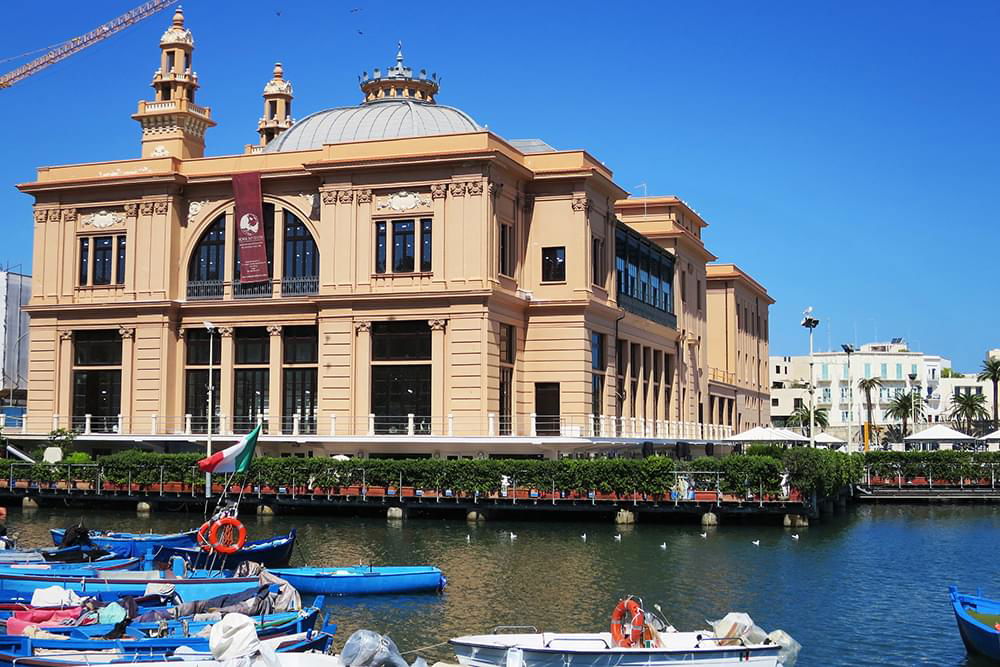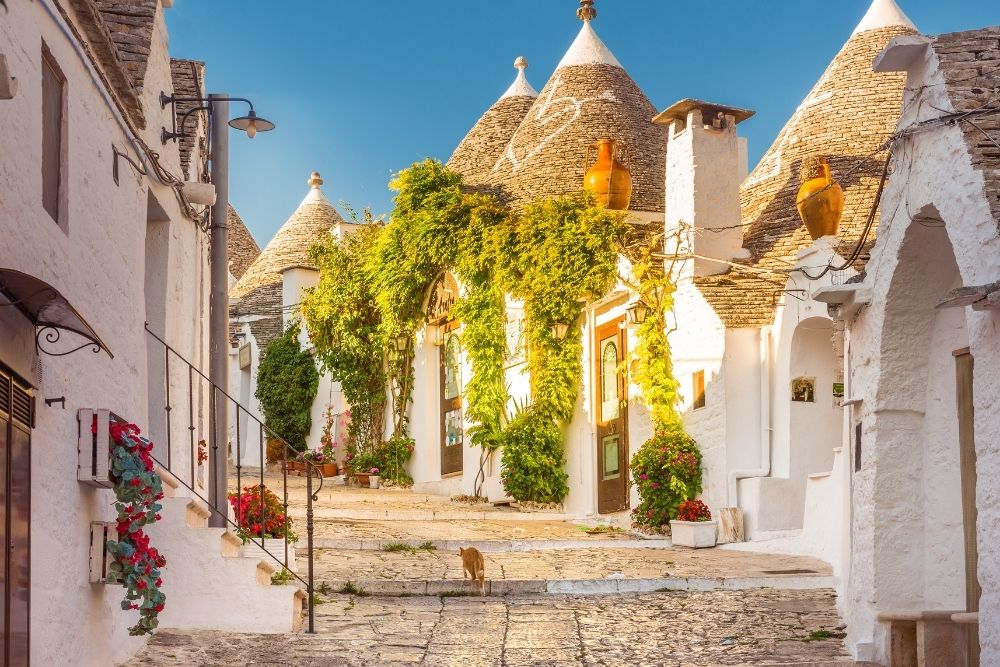
Bari
The capital city of Puglia in southern Italy, Bari is a busy port with connections along the Adriatic coast to Greece, Albania and Croatia. It’s a historic but modern city helped by a high student and migrant population. It’s also known for its nightlife and has a historic sports rivalry with Lecce, another Puglian city.
Bari is at the forefront of the country’s southern region’s economic centre due to its access to numerous shipping routes. It’s a beautiful city known for its food, churches, castles, shopping and friendly locals.
You have to travel back to 2000 BC to find the first inhabitants of the area Barium, as it was known in Latin back then. The city’s exact origins are unknown, however, it is generally believed to have started with a tribe of Proto-Indo-Europeans who originated in Greece and migrated to Italy.
In 109AD Roman Emperor Trajan diverted the existing Via Appia route so that it would pass through Bari, which elevated Bari to its current status as Puglia’s capital.
Once the Romans began their rule in the 3rd Century BC, they turned the area into a thriving trading port. Fish was its best-known export. The old port (Porto Vecchio) from which the Romans kickstarted its economical rise is still in place today and hosts a thriving fish market.
After the fall of Rome, Bari came under Byzantine rule and then Norman. Bari’s port then became an export location for Slavic slaves. This period saw thousands of eastern Europeans sent to Turkey and the Middle East. Later, Bari was to become a major departure point for the Crusades.
In 1087, under Norman rule, came Bari's defining historical moment: the arrival of the relics of San Nicola (Santa Claus). The Puglians were first to arrive at his burial site in Myra, Turkey and brought back his relics to Bari on 9th May 1087. Requiring a suitable place for depository, the Normans built the stunning Basilica di San Nicola. Nowadays, the Romanesque architecture is the focal point of Bari Vecchia (the old town).
In the 12th century, after William II’s death, the German Swabians dominated southern Italy. Frederick II then rebuilt the magnificent Castello Svevo as a gateway to the old town. It still stands perfectly today.
Despite the many changes, Bari has not forgotten its trade history. Since 1930 it has played host to one of the Mediterranean's most prestigious trade fairs, the Fiera del Levante.
Nowadays, people come to Bari for pilgrimage, shopping or to enjoy the beaches (the main one is Pane e Pomodoro). Pane e Pomodoro is also a long seafront promenade (1km in total) leading from Bari Vecchia to a modern shopping district, built early 19th century by Joachim Murat, Napoleon's brother-in-law.
Tourist attractions include the fish market, Teatro Petruzzelli (the fourth largest opera house in Italy), the University of Bari Aldo Moro and the ruins of Santa Maria del Buon Consiglio church. Shopping lovers can also peruse Louis Vuitton and Hermes on the luxurious Corso Cavour.







